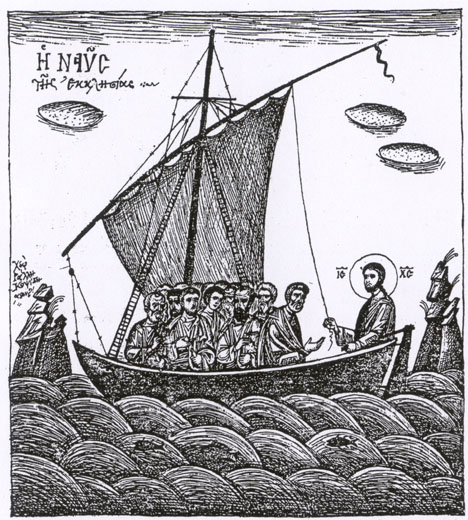
Canonical references found herein are from:
THE RUDDER
(PEDALION)
OF THE
METAPHORICAL SHIP OF THE ONE HOLY CATHOLIC AND
APOSTOLIC CHURCH
OF THE ORTHODOX CHRISTIANS
OR
ALL THE SACRED AND DIVINE
CANONS
OF THE HOLY AND RENOWNED APOSTLES, OF THE HOLY
COUNCILS, ECUMENICAL AS WELL AS REGIONAL, AND OF
INDIVIDUAL DIVINE FATHERS, AS EMBODIED IN THE
ORIGINAL GREEK TEXT, FOR THE SAKE OF AUTHENTICITY,
AND EXPLAINED IN THE VERNACULAR BY WAY OF
RENDERING THEM MORE INTELLIGIBLE TO THE LESS
EDUCATED
by
AGAPIUS, A HIEROMONK AND NICODEMUS, A MONK
and
diligently redacted at the instance of His Superlative
All-Holiness and of the Sacred and Holy Synod by
Seignior Dorotheus, and Erudite Teacher and Preacher
FIRST PRINTED AND PUBLISHED (A.D. 1800)
By Permission and Exhortation and Order of the Superlatively
All-Holy and Ecumenical Patriarch and of the Holy Synod, under
the Supervision of Theodoret (Ath.) of Ioannina, one among the
Hieromonachs.
The Whole Now Faithfully Translated into English,
From the Fifth Edition Published by John Nicolaides
(Kesisoglou the Caesarean) in Athens, Greece, 1908.
by
D. CUMMINGS
Published by
THE ORTHODOX CHRISTIAN EDUCATIONAL SOCIETY
1526 Henderson Street, Chicago 13, Illinois.
1957

"This ship symbolizes the catholic Church of Christ. Its keel represents the orthodox faith in the Holy Trinity. Its beams and planks, the dogmas and traditions of the faith. Its mast represents the Cross; its sail and rigging represent Hope and Love. The master of the vessel is our Lord Jesus Christ, whose hand is on the helm. The mates and sailors are the Apostles, and the successors of the Apostles, and all clergymen, secretaries and notaries, and occasional teachers. The passengers comprise all Orthodox Christians. The sea symbolizes present life. A gentle and zephyrlike breeze signifies whiffs and graces of the Holy Spirit wafting the vessel on its course. Winds, on the other hand, are temptations baffling it. Its rudder, whereby it is steered straightforwardly to the heavenly harbor is the present handbook of the sacred Canons." (Rudder, p. vi; icon provenance unknown, but cf. here.)